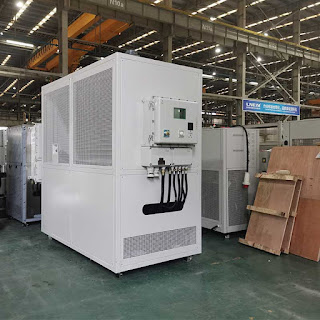According to the temperature and medium, the high and low temperature integrated machine can be divided into oil-cooled high and low temperature integrated machine and water-cooled high and low temperature integrated machine. The service life of the high and low temperature all-in-one machine is generally 5-10 years, and there are many reasons that affect its aging and reduce the service life. Let's briefly understand the following points.
1. Working temperature: As the machine operation will generate high temperature and the surrounding temperature will rise, which will increase the intensity of light and the degree of destruction. Therefore, when working with high and low temperature equipment, it is necessary to grasp the application range of temperature.
2. Humid and cold environment: General humidity, precipitation, dew, etc. are all factors that cause dampness and coldness of machinery and equipment. Dewdrops produced by moisture are the key factors for outdoor dampness and coldness. Natural ventilation should be considered, otherwise it will cause severe damp and cold digestion and absorption.
3. Seal failure: Seal failure is caused by corrosion, heat loss, wear, installation, operation and other reasons. After the autoclave mechanical seal is removed, the sealing surface is not scratched or worn, so physical damage to the sealing surface can be ruled out. According to the various manifestations of crystallization, fouling and mechanical seal failure in the sealed inner cavity, it is preliminarily determined that the easy crystallization and corrosion of the conveying medium are the main reasons for the seal failure.












